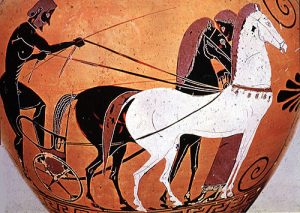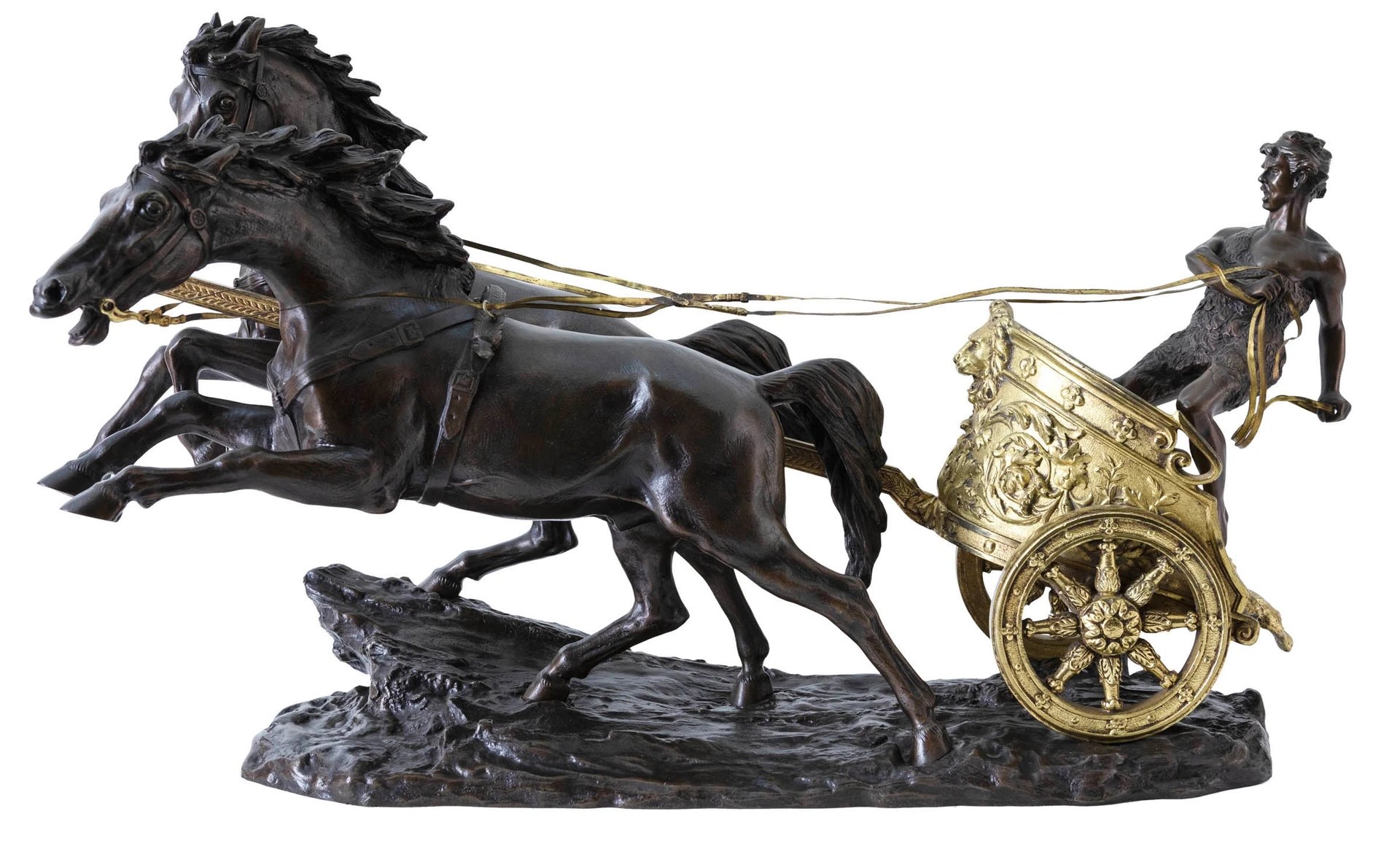Plato: A soul in three parts, and the city-state as a large soul
Plato’s theory of Forms sheds light on his ideas about the soul.
First of all, he claims that the body and the soul are distinct. First to exist is the soul, or psyche, which is eternal and immortal, and survives beyond the death of the body. It is that which decides how we behave.
The body, on the other hand, is perishable. In fact, he considers the body the prison of the soul, trapping what is permanent in a cage of impermanence.
In a dialogue with Glaucon and Adeimantus, Socrates (in Plato’s Republic) is trying to determine whether the soul consists of one or several parts.
If it consists of one part, then it is difficult to explain how we sometimes want contradictory things. For instance, we may be tempted to take something which isn’t ours, and at the same time feeling reluctant to take it. The theory of non-contradiction states that contradicting propositions (for example, I want it, and, I don’t want it) are mutually exclusive; they cannot be true in the same sense at the same time.
Following this line of thought, therefore, a soul that consists of only one part cannot concurrently hold this contradiction. Which leaves us with a soul made of multiple parts, with Socrates arguing there are three such distinct parts.
i. The tripartite soul
Plato argues that there are three parts of the soul:
- the logical, or rational, part;
- the spirited part; and
- the appetitive part.
From one person to the next, these three parts are in different balance. These difference in balance make us who we are, being responsible for why we act the way we act.
To describe how these three parts work together as one soul, Plato uses the allegory of the chariot, in his Phaedrus.

Imagine a charioteer driving a chariot pulled by two horses with very different characters.
One of the horses, a high-spirited white horse, stands for the spirited, or lively, part of the soul, and embodies emotion, passion, and ‘hot-bloodedness’. The spirited part loves being challenged, and is angered by injustice and cruelty. While impulsive, it is rationally and morally impulsive, keen on the positive part of passionate nature, for example rational indignation.
The other, a black horse on the left, stands for the appetitive part of the soul, seeking irrational passions and appetites. From it stems our drive for pleasure, security, and comfort. It drives our libido and makes us seek food, safety, and, most notably, money.
The charioteer represents the logical, or rational, part, judging what is best and true for us. This part of our psyche thinks, analyses, looks ahead, rationally weighs options, and tries to guide the horses and chariot. It is the part that should be in charge, which decides when and which one of the horses should take reign.
Both charioteer and horses need each other. A charioteer without horses cannot move, and horses without a charioteer will run wild.
The rational part of our soul needs the appetitive and spirited parts to drive it, while the latter two need the rational part for guidance and to make good decisions.
A balance between the three helps us live a morally fulfilled life.
ii. Plato’s moral philosophy
As we’ve seen above, every soul is not the same, with different balances in the tripartite soul giving us different behaviours.
However, if we are to become the best persons we can be, we need to look at how to become virtuous.
In the Republic, Plato identifies four cardinal virtues:
- wisdom;
- temperance, or self-control;
- courage; and
- justice.
In the Protagoras, he also identifies a fifth: piety. (For an interesting discussion on the meaning of piety, read Plato’s Euthyphro.)
The cardinal virtues reflect the nature of the soul. It is by pursuing these that we can hope to become the best we can possibly be.
iii. The state as man writ large
Plato also uses the idea of the tripartite soul in his political philosophy, to explain his perspective of what the ideas city-state should look like, seeing in the latter a sort of magnified version of the individual.
He draws parallels between the three parts of the psyche and the three parts he thinks the ideal city-state should have, with each of these being made of a certain type of people.
What he calls men of reason should be the ones who rule. The soldiers and guardians of the city state, also called auxilliaries, should be men of courage, while the men of appetite are the artisans, workers skilled in a trade, such as craftsmen or farmers.
As with the soul, the city-state’s version of courage and appetite should be governed by reason, whom he identifies as the philosopher–king. According to Plato, philosophers make the best rulers because they possess a devotion to wisdom, as well as possessing intelligence, reliability, and a willingness to live a simple life.
Prizing reason and wisdom, the philosopher-king is able to understand true goodness and justice in a way that other people cannot.
iv. Conclusion
In conclusion, Plato’s philosophy posits that the human soul is comprised of three distinct parts: reason, spirit, and desire. He also believed that the city-state is a reflection of the soul, with its citizens representing these three parts in a larger social context. Plato’s ideas continue to be relevant today and continue to inspire scholars and readers alike. If you are interested in exploring his philosophy further, here are a few books that you will want to read:
- “The Republic” by Plato: This is perhaps the most famous and influential of Plato’s works, in which he lays out his ideal society and its relationship to the individual soul.
- “Plato: The Complete Works” edited by John M. Cooper: This comprehensive collection includes all of Plato’s surviving works, including dialogues, letters, and fragments. It is an essential resource for anyone interested in studying Plato in depth.
- “The Cave and the Light: Plato Versus Aristotle, and the Struggle for the Soul of Western Civilization” by Arthur Herman: This book provides a broad overview of the intellectual rivalry between Plato and Aristotle and their impact on Western civilization. It is a fascinating exploration of the history of ideas.
- “Plato and a Platypus Walk into a Bar: Understanding Philosophy Through Jokes” by Thomas Cathcart and Daniel Klein: A lighthearted book that uses humor to introduce readers to the ideas of Plato and other philosophers. It is a fun and accessible way to learn about philosophy.
Whether you are a seasoned scholar or a casual reader, these books offer valuable insights into Plato’s philosophy and its relevance to our lives today





Pingback: Philosophy through Don’t Look Up: Inappropriate authority, democracy, and Plato – PhilosophyMT